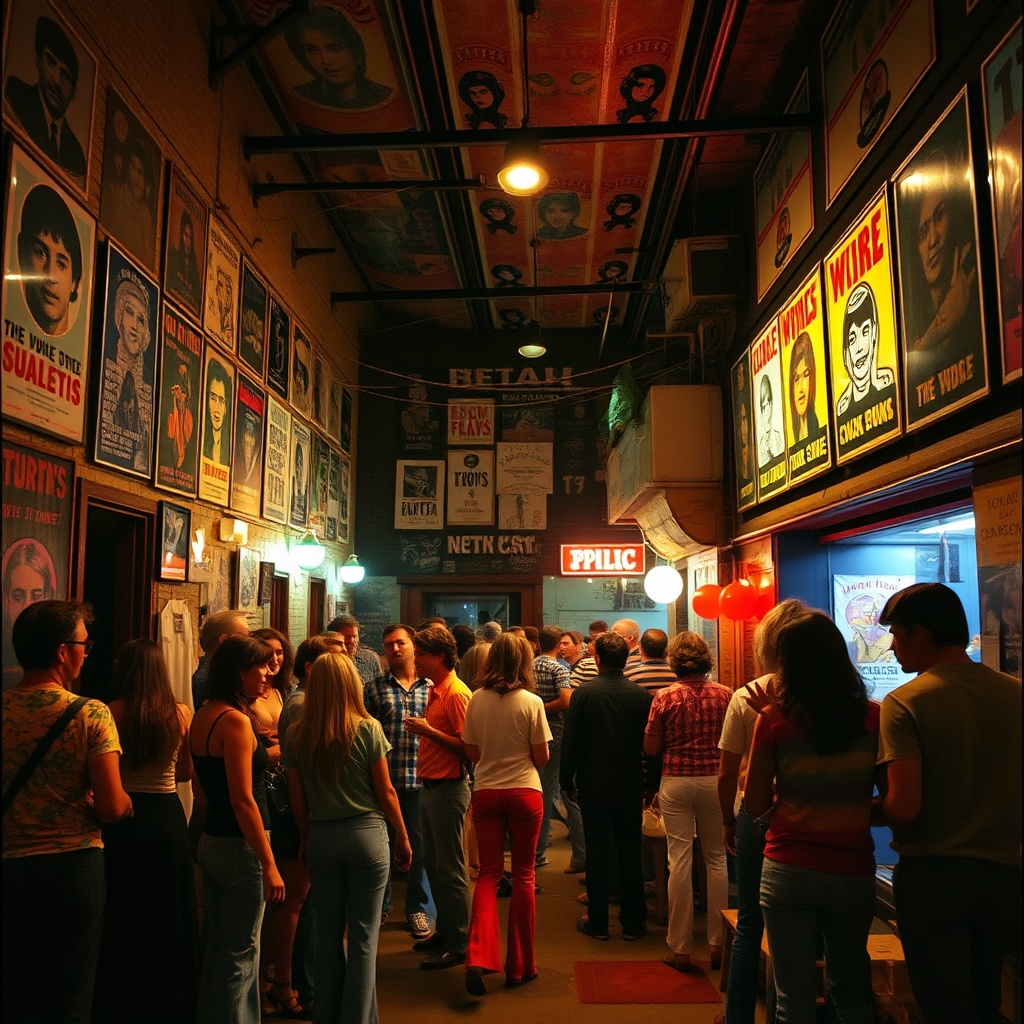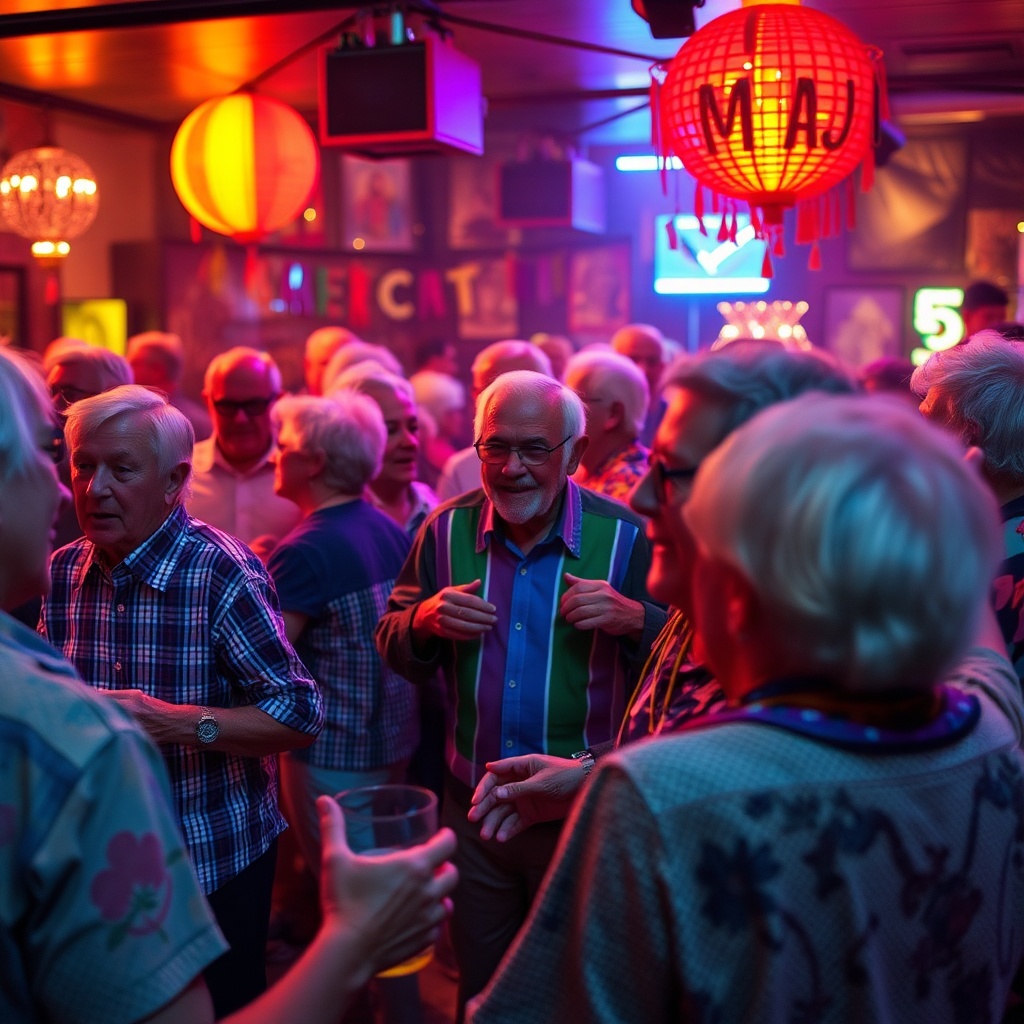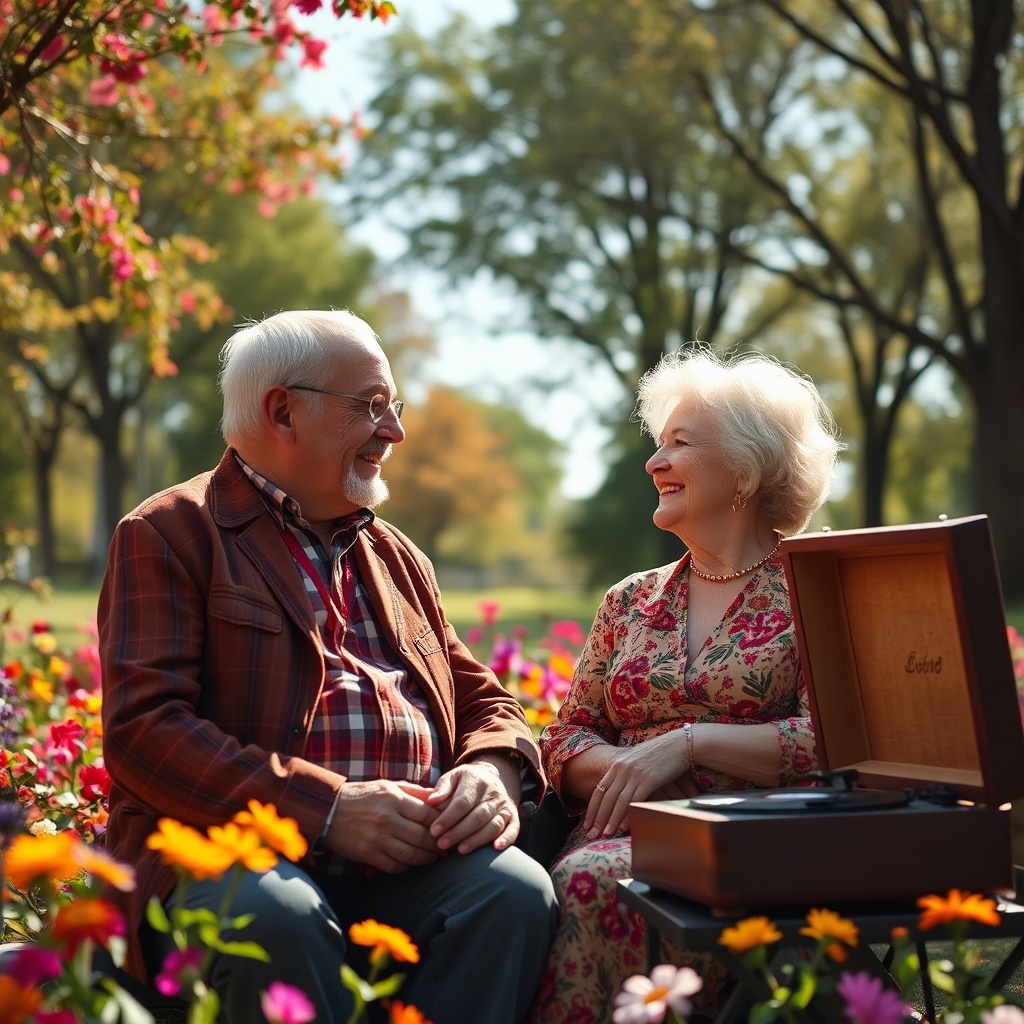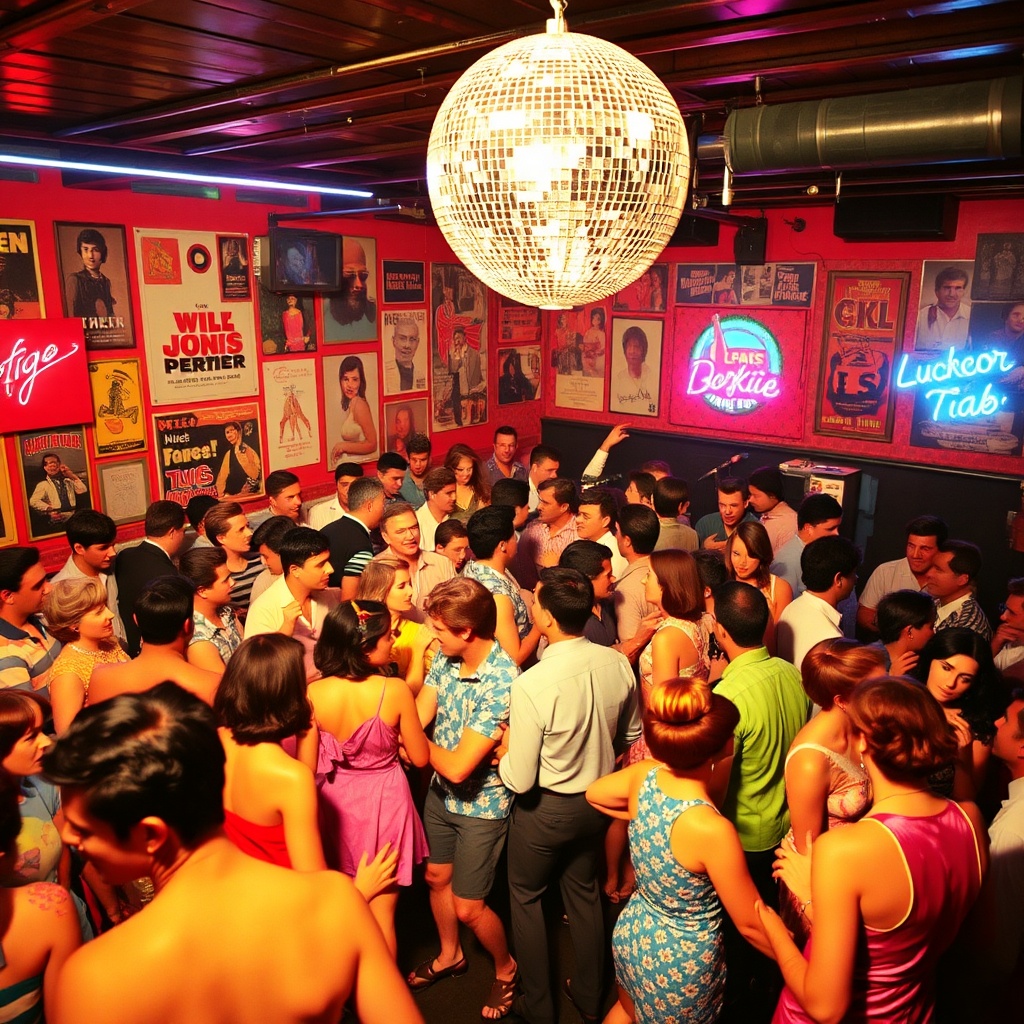The Hidden History: Discovering the Underground Scene of the 1960s

Welcome to a journey back in time, where we will explore the vibrant and often concealed world of gay clubs in the 1960s. This was a decade of transformation, marked by the struggle for rights and the celebration of identity.
The Birth of a Scene
As the 1960s unfolded, gay clubs became important cultural hubs for the LGBTQ+ community. They offered a rare space for acceptance and self-expression in a society that largely marginalized them.
Characteristics of the Underground Scene
These establishments were often hidden, operating under the radar of the law and social norms. Here are some defining traits:
- Discreet Locations: Many clubs were located in basements or behind unmarked doors, ensuring privacy for their patrons.
- Unique Entertainment: Drag performances, live music, and dance nights were staples, providing a sense of freedom.
- Community Bonds: These clubs fostered a sense of belonging, serving as safe havens for individuals seeking camaraderie.
A Glimpse into the Life Inside
Imagine stepping into one of these clubs. The air is thick with the sound of laughter and music, the atmosphere electric. Patrons, dressed in their best, dance and socialize, forgetting the outside world.
Challenges Faced
Despite the vibrancy, life in the underground scene was fraught with danger:
- Police Raids: Many clubs faced constant threats from law enforcement, leading to frequent raids and arrests.
- Stigmatization: Being openly gay was perilous; many faced discrimination in their daily lives.
Legacy of the 1960s Clubs
The resilience of the underground scene laid the groundwork for future advancements in LGBTQ+ rights. The courage of those who frequented these clubs sparked a movement that would reverberate through the decades.
As we reflect on the hidden history of gay clubs in the 1960s, it’s essential to honor those who paved the way for future generations. Their stories are a testament to the enduring spirit of liberation and community.
A Safe Haven: The Role of Gay Clubs as Sanctuaries for Self-Expression

In the tumultuous decade of the 1960s, a cultural revolution unfolded across America. This was a time marked by social upheaval, civil rights movements, and a burgeoning sense of identity for many marginalized groups. Among these, the LGBTQ+ community began to carve out spaces where they could express themselves freely. Gay clubs emerged as pivotal sanctuaries for self-expression, offering not just a place to dance but a sense of belonging and acceptance.
The Birth of a Sanctuary
Imagine stepping into a dimly lit room filled with vibrant colors and pulsating music. For many, entering a gay club was akin to stepping into a new world, one that was welcoming and liberating. These establishments provided:
| Elements of Safe Haven | Description |
|---|---|
| Acceptance | For the first time, individuals could express their true selves without fear of judgment. |
| Community | These clubs fostered connections, allowing people to form supportive relationships. |
| Expression | From flamboyant fashion to bold performances, self-expression flourished here. |
Art and Self-Expression
The art scene during the 1960s was deeply intertwined with gay culture. Clubs became stages for drag shows and live performances, showcasing talents that challenged societal norms. This form of art was not just entertainment; it was a statement of existence.
Cultural Impact
As more people found refuge in these clubs, the ripple effects began to reshape broader societal perceptions:
Normalizing LGBTQ+ Identity: Visibility in these spaces helped normalize diverse identities.
Political Activism: Many patrons became politically active, utilizing their experiences to advocate for rights.
Creating History: Events like the Stonewall Riots were sparked from the frustrations born in these clubs.
As we reflect on the legacy of gay clubs from the 1960s, it is evident they played a crucial role in the journey towards liberation and self-acceptance. They were not merely venues for nightlife; they served as sanctuaries for a community longing for connection and expression. The echoes of these havens continue to resonate today, reminding us of the importance of safe spaces for all individuals to celebrate their true selves.
The Beat of Change: How Music Shaped the Gay Liberation Movement

The Heartbeat of a Movement
In the vibrant atmosphere of the 1960s, music became more than just a form of entertainment; it was a lifeline for the LGBTQ+ community. The beat of change resonated through the notes of freedom songs, disco anthems, and rock ‘n’ roll hits, each echoing the struggles and triumphs of a generation.
Music as a Catalyst for Change
As you reminisce about those times, consider how music served as a unifying force. It provided a space for individuals to express their true selves, often in the safety of dimly lit gay clubs. Here are some key aspects of how music influenced the gay liberation movement:
- Expression of Identity: Songs became anthems for the movement, with lyrics that spoke to the heart of the struggle for equality.
- Gathering Spaces: Gay clubs were often the first places where individuals could openly dance and celebrate their identity.
- Community Building: Music fostered a sense of belonging, creating communities that supported each other in times of adversity.
Iconic Songs and Artists
Several songs and artists emerged as symbols of the gay liberation movement. Let’s explore a few significant ones:
| Song Title | Artist | Year | Significance |
|---|---|---|---|
| “I Will Survive” | Gloria Gaynor | 1978 | Anthem of resilience and empowerment. |
| Lady Gaga | 2011 | Celebration of self-acceptance and pride. | |
| “Y.M.C.A.” | The Village People | 1978 | Iconic party anthem promoting acceptance. |
Dance as a Form of Protest
As you think back, remember how dancing became a form of protest. The dance floors of gay clubs transformed into spaces where people not only celebrated their identities but also resisted societal norms. The act of dancing was revolutionary, providing a sense of freedom in a world that often sought to suppress it.
Legacy of Music in LGBTQ+ Culture
The legacy of music in the gay liberation movement extends beyond the 1960s. Today, the songs that shaped the movement continue to inspire new generations. As you reflect on these melodies, consider how they contribute to the ongoing fight for equality and acceptance.
Join the Conversation
What songs do you remember that had an impact on you during this time? Share your memories and let’s celebrate the music that brought us together in the fight for liberation.
From Shadows to Spotlight: Celebrating Icons of the 1960s Gay Nightlife
In the 1960s, a transformative wave swept through the world, and within this tide emerged a vibrant culture of gay nightlife. As we explore this era, let us remember the icons who shaped the spaces where freedom and expression flourished.
The Cultural Landscape
The 1960s were marked by significant social upheaval. With the rise of the civil rights movement and counterculture, many individuals found the courage to express their identities. During this period, gay clubs became sanctuaries for those seeking community and acceptance.
Iconic Venues
- The Stonewall Inn: Often regarded as the birthplace of the modern LGBTQ+ rights movement, this bar in New York City was a refuge for many.
- The Black Cat Tavern: Located in Los Angeles, it served as a meeting place for artists, activists, and the gay community.
- Club 82: A popular drag club in New York, known for its extravagant performances and welcoming atmosphere.
Celebrating the Icons
Let’s shine a light on some key figures who became icons of the 1960s gay nightlife:
- Marsha P. Johnson: A prominent figure at the Stonewall riots, she became a symbol of resistance and advocacy for LGBTQ+ rights.
- Sylvia Rivera: A transgender activist who fought for the rights of marginalized communities within the LGBTQ+ spectrum.
- Andy Warhol: A leading figure in the art scene, his work often featured LGBTQ+ themes and celebrated the nightlife culture.
The Impact of Drag Culture
Drag performances were central to gay nightlife in the 1960s. They provided a platform for self-expression and challenged societal norms:
- Drag Queens: Artists like Hedda Lettuce and RuPaul brought glamour and humor to the stage, captivating audiences.
- Drag Balls: Events where participants showcased extravagant costumes and performances, fostering a sense of community.
The 1960s gay nightlife was a vibrant tapestry woven from the threads of resistance, creativity, and love. As we celebrate these icons and their contributions, let us recognize the courage it took to step out of the shadows and into the spotlight.
Reflect on this: What memories do you hold from this era? How did these spaces influence your understanding of identity and community?
Unity in Diversity: The Intersectionality of the LGBTQ+ Community During the Era
Understanding Intersectionality
During the 1960s, the LGBTQ+ community began to emerge from the shadows, forging a path toward liberation and acceptance. But what does intersectionality mean within this context? It refers to how various aspects of a person’s identity, including race, gender, and sexual orientation, overlap and interact.
The Melting Pot of Identities
Imagine a vibrant community where individuals from different backgrounds come together. In gay clubs, you would find diverse faces: Black, Latino, Asian, and White individuals, each bringing their own unique experiences and struggles. These clubs became a safe haven where unity flourished amidst diversity.
Shared Struggles, Common Goals
As you explore the history of these clubs, consider the shared struggles of their patrons. Discrimination and stigma were rampant, but within the walls of these establishments, people found common ground. They united not just as members of the LGBTQ+ community, but also as allies in the fight against racism, sexism, and other forms of oppression.
Voices of Change
In the pulsating atmosphere of the clubs, activists emerged. Figures like Marsha P. Johnson and Sylvia Rivera were not only advocates for gay rights but also champions for transgender rights and racial justice. Their stories remind us that the fight for liberation was not a singular narrative but a tapestry of voices, each adding depth and color to the movement.
Creating Community
What did it feel like to step into these clubs? Picture the laughter, the music, and the sense of belonging that enveloped you as you entered. This was a space where people could express their true selves without fear. It fostered a sense of community that was crucial for many, especially those who felt isolated in their daily lives.
Legacy of Intersectionality
The legacy of the 1960s LGBTQ+ liberation movement continues to influence today’s discourse on intersectionality. As we reflect on this era, consider how the unity forged in those gay clubs laid the groundwork for future activism. The struggles and celebrations of that time remind us that the fight for equality is ongoing and that we must continue to uplift all voices within the community.
Beyond the Dance Floor: The Activism that Sparked a Revolution
Understanding the Context
In the vibrant era of the 1960s, a revolution was brewing not just on the streets, but within the walls of gay clubs. These spaces became more than just a place to dance; they turned into sanctuaries of identity, where individuals gathered to express themselves freely. But have you ever wondered how these dance floors became the epicenter of activism and change?
The Birth of the Modern Gay Rights Movement
As the decade unfolded, the fight for civil rights expanded to include those in the LGBTQ+ community. Events like the Stonewall Riots in 1969 were sparked by years of oppression and discrimination. How familiar are you with the stories of those brave individuals who stood up against injustice?
More Than Just a Party
While the rhythm of disco and the glamour of nightlife attracted many, the clubs also served as a platform for voices that had been silenced for too long. Activism flourished in these spaces, with discussions around equality, acceptance, and visibility taking center stage. Do you recall the feeling of camaraderie and support that emerged in these environments?
Key Figures in the Movement
Many influential figures emerged from the shadows of these clubs. Leaders like Marsha P. Johnson and Sylvia Rivera became icons, advocating for the rights of the marginalized. What do you think motivated these individuals to risk everything for the sake of their community?
The Role of Music and Culture
Music was the heartbeat of the gay clubs, fueling the passion of the movement. Songs became anthems of resistance, empowering individuals to embrace their true selves. Can you think of any songs from that era that resonate with the spirit of liberation?
Legacy and Reflection
Today, we stand on the shoulders of giants who danced, fought, and loved fiercely. The legacy of these clubs continues to inspire activism, reminding us that while the dance floor is a place of joy, it is also a stage for social change. How can we honor this legacy in our own lives today?
Engaging with the Future
As we reflect on the past, let us ask ourselves: What can we do to continue the fight for equality and acceptance in our communities? The journey of liberation is ongoing, and each of us has a role to play. Let’s keep the spirit alive, beyond the dance floor.
The Language of Love: How Clubs Became a Platform for Political Voice
In the vibrant tapestry of the 1960s, gay clubs emerged as more than just places for entertainment; they became sanctuaries of self-expression and platforms for political activism. As we delve into this fascinating era, let’s explore how these havens of love and acceptance fostered a language that transcended mere words.
Creating Safe Spaces
Imagine entering a room filled with laughter, music, and the warmth of acceptance. For many in the LGBTQ+ community, clubs offered a rare refuge where they could be their authentic selves. These venues provided a crucial space for individuals to gather, share stories, and cultivate a sense of belonging.
Music and Movement
The beats of the 1960s were not just about rhythm; they were infused with messages of freedom and love. Songs became anthems of resistance, echoing the sentiments of those who dared to challenge societal norms. Can you recall a favorite tune from that era? How did it make you feel?
Political Awakening
As the walls of these clubs echoed with the sounds of acceptance, they also reverberated with the call for change. Activism began to flourish within these walls, as patrons discussed issues like police harassment, discrimination, and the fight for rights. Clubs transformed into meeting points for organizing rallies and protests. Can you picture the energy in the air as people united for a common cause?
A Language of Love
The language spoken in these clubs was one of love, solidarity, and defiance. It was a dialect that embraced diversity and celebrated differences. Through dance, conversation, and shared experiences, individuals found a voice to articulate their struggles and aspirations. How did you express your beliefs during challenging times?
Legacy of Empowerment
Today, the legacy of those vibrant clubs continues to inspire new generations. The language of love that flourished in the 1960s reminds us that unity and acceptance can pave the way for change. As we reflect, think about the evolution of this movement. What changes have you witnessed, and what stories do you carry from that time?
The rise of gay clubs in the 1960s was not just about nightlife; it was a pivotal moment in history that reshaped societal views and empowered voices. As we honor this legacy, let us remember that the language of love is timeless and continues to echo in our hearts.
A Journey Through Time: Personal Stories from the Heart of the Movement
Step back in time to the vibrant 1960s, a decade that sparked change and ignited the flames of liberation. In this interactive journey, we invite you to explore personal stories that echo the struggles and triumphs of the LGBTQ+ movement. Each tale is a thread in the rich tapestry of history, woven with courage, resilience, and hope.
The Safe Havens of Gay Clubs
In the heart of bustling cities, gay clubs emerged as safe havens for those seeking acceptance. Imagine a dimly lit room, where laughter and music intertwined, creating a sanctuary from a world that often rejected them. Here are some personal reflections:
- David, 72: “The first time I stepped into a gay bar, it felt like stepping into a new world. The fear of being discovered melted away as I danced freely with others who understood my struggles.”
- Margaret, 75: “The club became my second home. I found friends who were like family, and together we celebrated our identities in a world that tried to silence us.”
Moments of Courage
Each personal story reveals a moment of courage—when individuals chose to embrace their true selves despite societal pressures. These moments are powerful reminders of the strength found in community:
- James, 68: “I remember the first pride event I attended. It was electrifying! Standing there, surrounded by fellow activists, I felt a sense of belonging that I had never experienced before.”
- Linda, 70: “We organized rallies and protests from the basement of our club. The adrenaline rushed through us as we fought for our rights, united in our purpose to be seen and heard.”
The Evolution of a Movement
The rise of gay clubs in the 1960s was not just about nightlife; it was about a movement gaining momentum. Each personal story reflects the evolution of a community that transformed fear into activism:
- Tom, 74: “The Stonewall Riots were a turning point. We fought back against oppression, and that night changed everything for us. It lit a fire under the movement that continues to burn today.”
- Betty, 76: “From those early days of hidden identities to the open celebrations we see now, it’s incredible to witness how far we’ve come. But we must not forget our past and those who paved the way.”
Reflections on the Legacy
As we reflect on these personal stories, we gain insight into the legacy of the gay clubs of the 1960s. They were more than just places to dance; they were pivotal spaces of change. The stories shared here are a testament to the resilience of those who dared to live authentically:
- George, 77: “Looking back, I see how the clubs were a breeding ground for ideas and initiatives that shaped our rights today. We were pioneers in our own right.”
- Claire, 73: “The friendships forged in those clubs remain my greatest treasures. We laughed, cried, and fought together, and that bond is unbreakable.”
These personal stories from the heart of the movement remind us of the importance of community, courage, and love. As we journey through the echoes of liberation, let us honor the past while continuing to strive for a more inclusive future. Join us in celebrating these narratives that have shaped the LGBTQ+ landscape we know today.
Courageous Connections: How Friendships Flourished in the Face of Adversity
Understanding the Era
The 1960s was a pivotal decade marked by social upheaval and a burgeoning fight for civil rights. For the LGBTQ+ community, it represented a time of both struggle and transformation. As individuals began to openly express their identities, gay clubs emerged as safe havens where friendships could blossom amidst societal challenges.
The Role of Gay Clubs
Gay clubs in the 1960s were more than just places to dance and socialize; they were sanctuaries for many seeking connection and acceptance. Here, individuals found a sense of belonging that was often absent in their everyday lives. These establishments played a crucial role in fostering courageous connections. Let’s explore how:
- Sheltering Spaces: Many gay clubs offered a reprieve from a judgmental society, allowing patrons to express themselves openly.
- Community Building: Clubs served as focal points for organizing social events, rallies, and discussions, helping to create a tightly-knit community.
- Support Systems: Friendships formed in these clubs often extended beyond their walls, providing emotional and practical support during difficult times.
Stories of Friendship
Consider the stories of individuals who found more than just a night out in these clubs:
- Alex and Jamie: Meeting at a local club, they bonded over shared experiences of discrimination, eventually becoming lifelong friends who advocated for LGBTQ+ rights.
- Chris and Taylor: Their friendship blossomed during a tumultuous time, as they supported each other through personal challenges, demonstrating the power of solidarity.
The Courage to Connect
Building friendships in the face of adversity requires courage. The challenges faced by LGBTQ+ individuals during the 1960s were significant, yet many chose to stand together, forging connections that would last a lifetime. In doing so, they not only uplifted one another but also laid the groundwork for future generations to live more openly.
Reflections on Resilience
As we reflect on the past, it’s essential to recognize the resilience of those who came before us. The friendships formed in gay clubs during the 1960s were not merely about companionship; they represented a revolutionary spirit that challenged the status quo. These courageous connections remind us of the strength found in unity and the profound impact of love and friendship.
Engaging in Conversation
How can we honor these courageous connections today? Here are some questions to ponder:
- How did your friendships help you navigate difficult times?
- What role do you believe community spaces play in fostering connections?
- How can we continue to support each other in the face of adversity?
Legacy of Liberation: The Lasting Impact of 1960s Gay Clubs on Today’s Society
The 1960s were a pivotal decade for the LGBTQ+ community, marked by a surge of activism, visibility, and the establishment of gay clubs as safe havens. These venues not only provided places for individuals to express their identities but also became catalysts for broader societal change. Let’s explore how the legacy of these clubs continues to resonate in today’s society.
Safe Spaces and Community Building
What were gay clubs in the 1960s? They were more than just bars; they were sanctuaries where individuals could gather without fear of persecution. Many elderly individuals may remember these places as the first time they felt a sense of belonging.
Interactive Reflection: Think back to a time when you felt accepted and safe. How did that environment impact your sense of identity?
The Role of Music and Dance
Music played a central role in the culture of 1960s gay clubs. The beats and rhythms were not just entertainment; they were expressions of freedom and joy.
Do you recall any songs that were particularly meaningful during that time? These anthems helped forge a collective identity that continues to influence today’s music and LGBTQ+ pride events.
Impact on LGBTQ+ Rights
The visibility gained through these clubs contributed significantly to the fight for LGBTQ+ rights. They served as venues for organizing and rallying support, culminating in events like the Stonewall Riots of 1969.
Consider this: How do you think these early movements shaped the rights and freedoms that are celebrated today?
Modern-Day Reflections
Today, the influence of 1960s gay clubs can be seen in various aspects of society:
| Aspect | Influence |
|---|---|
| Social Acceptance | The increasing visibility of LGBTQ+ individuals in all areas of life, including politics and media. |
| Events and Celebrations | Pride parades and festivals are direct descendants of the celebrations that began in these clubs. |
| Cultural Contributions | Art, fashion, and music continue to be significantly influenced by the LGBTQ+ community. |
The legacy of 1960s gay clubs is not just a chapter in history; it is a living, breathing part of today’s culture. Their impact is felt in the ongoing fight for equality, the celebration of diversity, and the importance of community.
Final Thought: As we reflect on this legacy, how can we continue to support and uplift the LGBTQ+ community in our own lives today?
